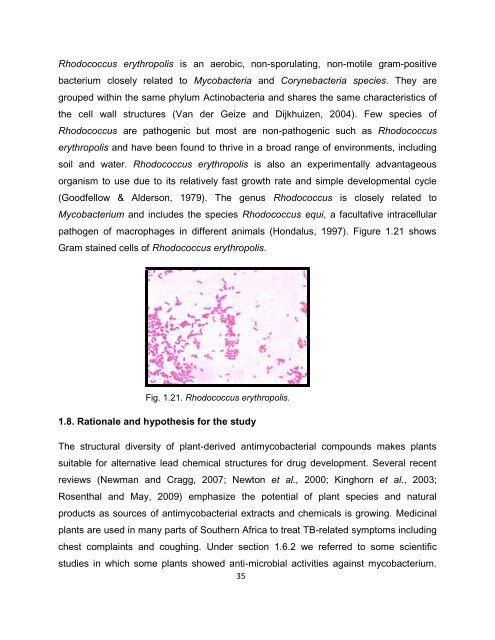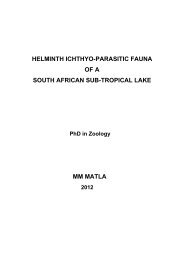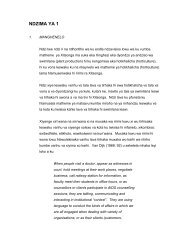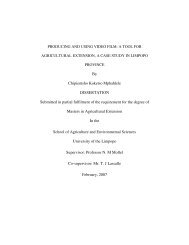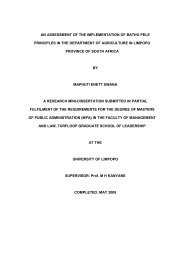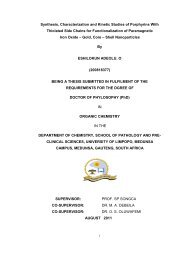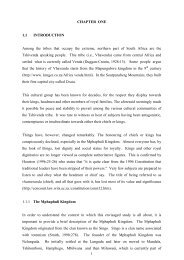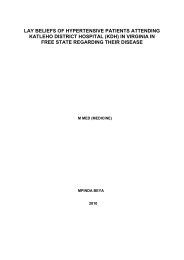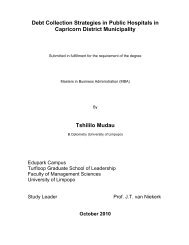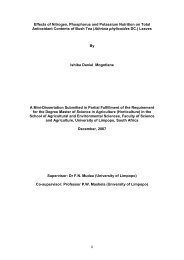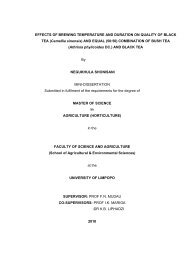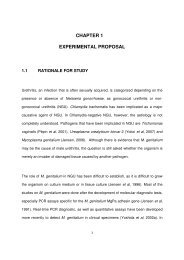Mmushi T MSc (Microbiology).pdf
Mmushi T MSc (Microbiology).pdf
Mmushi T MSc (Microbiology).pdf
Create successful ePaper yourself
Turn your PDF publications into a flip-book with our unique Google optimized e-Paper software.
Rhodococcus erythropolis is an aerobic, non-sporulating, non-motile gram-positive<br />
bacterium closely related to Mycobacteria and Corynebacteria species. They are<br />
grouped within the same phylum Actinobacteria and shares the same characteristics of<br />
the cell wall structures (Van der Geize and Dijkhuizen, 2004). Few species of<br />
Rhodococcus are pathogenic but most are non-pathogenic such as Rhodococcus<br />
erythropolis and have been found to thrive in a broad range of environments, including<br />
soil and water. Rhodococcus erythropolis is also an experimentally advantageous<br />
organism to use due to its relatively fast growth rate and simple developmental cycle<br />
(Goodfellow & Alderson, 1979). The genus Rhodococcus is closely related to<br />
Mycobacterium and includes the species Rhodococcus equi, a facultative intracellular<br />
pathogen of macrophages in different animals (Hondalus, 1997). Figure 1.21 shows<br />
Gram stained cells of Rhodococcus erythropolis.<br />
Fig. 1.21. Rhodococcus erythropolis.<br />
1.8. Rationale and hypothesis for the study<br />
The structural diversity of plant-derived antimycobacterial compounds makes plants<br />
suitable for alternative lead chemical structures for drug development. Several recent<br />
reviews (Newman and Cragg, 2007; Newton et al., 2000; Kinghorn et al., 2003;<br />
Rosenthal and May, 2009) emphasize the potential of plant species and natural<br />
products as sources of antimycobacterial extracts and chemicals is growing. Medicinal<br />
plants are used in many parts of Southern Africa to treat TB-related symptoms including<br />
chest complaints and coughing. Under section 1.6.2 we referred to some scientific<br />
studies in which some plants showed anti-microbial activities against mycobacterium.<br />
35


